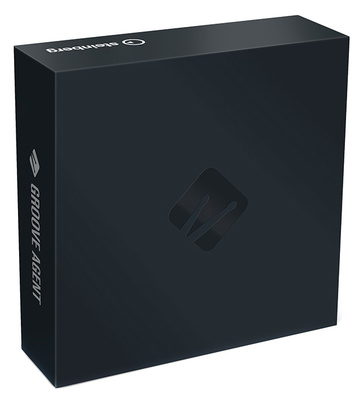
- #GROOVE AGENT TUTORIAL HOW TO#
- #GROOVE AGENT TUTORIAL SOFTWARE#
- #GROOVE AGENT TUTORIAL SERIES#
- #GROOVE AGENT TUTORIAL FREE#
#GROOVE AGENT TUTORIAL HOW TO#
#GROOVE AGENT TUTORIAL SOFTWARE#
The techniques in this course are based on years of trial and error, MIDI drum programming and software evaluations. This course will show you how to create original drum parts quickly and easily. Experiment with adding toms, percussion and cymbals to get different effects.If you’ve found it difficult to program realistic drum parts in the studio (without a real live drummer), then the tips and guidance in this course are going to change the way you produce music! If you want smaller notes simply change the grid to 1/16.
#GROOVE AGENT TUTORIAL FREE#
If you want some variety feel free to change the sound to different hi-hats (G#1 or A#1). Now using the pencil tool add closed hi-hats on the quavers between the main beats (F#1). Set the grid to 1/8 to divide the main beats into quavers. Now let’s add some hi-hats on the off-beat.It you can’t find the right sound you can drag the note up and down the keyboard until you find it. To do this hold down Alt (to load the pencil tool) and click the grid on beats 2 and 4. Now we are going to add a snare drum to beats 2 and 4.If the played in parts aren’t in time you can quantize them by setting the grid to ¼, selecting the notes and hitting apply quantize (the button with a play symbol in a circle). Simply double click on the region to open the ‘Piano Roll’. Now we are going to look at the second way of entering note into a MIDI instrument.Once you have performed the part you’ll see a new region next to the instrument. We will start with a basic four to the floor kick drum pattern.

To have the metronome/click play during the recording hit the click button on the transport bar (short cut: C). If you’d like a count-in hit the button marked with a ||* at the top right on the transport bar (short cut: !).

Once you have created your basic beat you can record it by hitting record on the transport bar (short cut: * Num Pad).We can use the second method in part 8 to embellish the recorded parts Although kits aren’t standardised most VST drum kits are laid out as follows īass / Kick drum ‘Q’, Snare drum ‘W’ & ‘E’, Hi-Hat Closed ‘5’, Half-Open ‘6’, Open ‘7Įxperiment with these controls to come up with a simple beat. Most drum parts incorporate a combination of kick/bass drum, snare drum and hi-hat so we will focus on these elements.You should then see the keyboard next to the transport window.

To activate or deactivate this function simply press Alt+K. In this tutorial we will look at using the computer keyboard. The first is to play the part in using either a USB keyboard or the computer keyboard.

#GROOVE AGENT TUTORIAL SERIES#
I thought I’d start with a basic drum beat, if you like this lesson and find it useful let me know in the comment section below and I’ll continue this series over the coming weeks. I had a couple of requests to go over some basic production techniques.


 0 kommentar(er)
0 kommentar(er)
